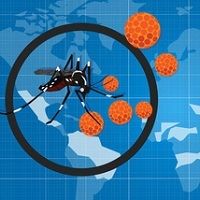Article
Dozens in US Confirmed with Travel-Related Zika
Author(s):
The CDC has confirmed Zika infections in 116 US residents, but that doesn't include cases confirmed in state labs or people who had it and never knew it. All the CDC cases are related to returning travelers.

Zika’s US footprint is getting bigger.
In a report released today the US Centers for Disease Control and Prevention’s Morbidity and Mortality Weekly Review, researchers found that at least 116 US residents have laboratory-confirmed Zika infections, based on CDC testing. All the cases are related to travel outside the continental US.
Cases confirmed at state laboratories were not included in the total, so there could be others, the CDC said. More than 90% of patients who sought testing had symptoms such as aches, fever, and a rash. Since many people get Zika and never feel sick, it is also likely that cases go undiagnosed or reported.
“Before 2015 Zika virus disease among US Travelers was uncommon,” Paige Armstrong, MD and colleagues noted in the report. But with outbreaks in the Pacific Islands, the Caribbean, and Central and South America, there is an increasing risk of infection in returning travelers.
So far there have been no cases acquired in the US, but there are concerns that since the virus is spread by mosquitos, there is a potential for it to become endemic in areas like Florida where mosquitos live year round.
Of the CDC-confirmed cases, most came as result of travel to Haiti (27 cases) El Salvador (16), Colombia (11), Honduras (11) and Guatemala (10).
One case involved a pregnant woman who contracted Zika during a visit to Brazil. Her baby was born with “severe congenital microcephaly,” believed to be due to the infection, the authors said.
Most (96%) of the cases were in women who had traveled to Zika zones, but 4% involved sexual transmission from people who had returned from such areas.
The CDC keeps revising its travel warnings and recommendations.
Among the latest changes, the CDC says pregnant women are relatively safe in Zika regions if they stay at an altitude of at least 6,560 feet above sea level—no-fly zones for Aedes aegytpti the mosquito that transmits the virus.
There are 37 countries and US territories where Zika is a problem.
2 Commerce Drive
Cranbury, NJ 08512
All rights reserved.





